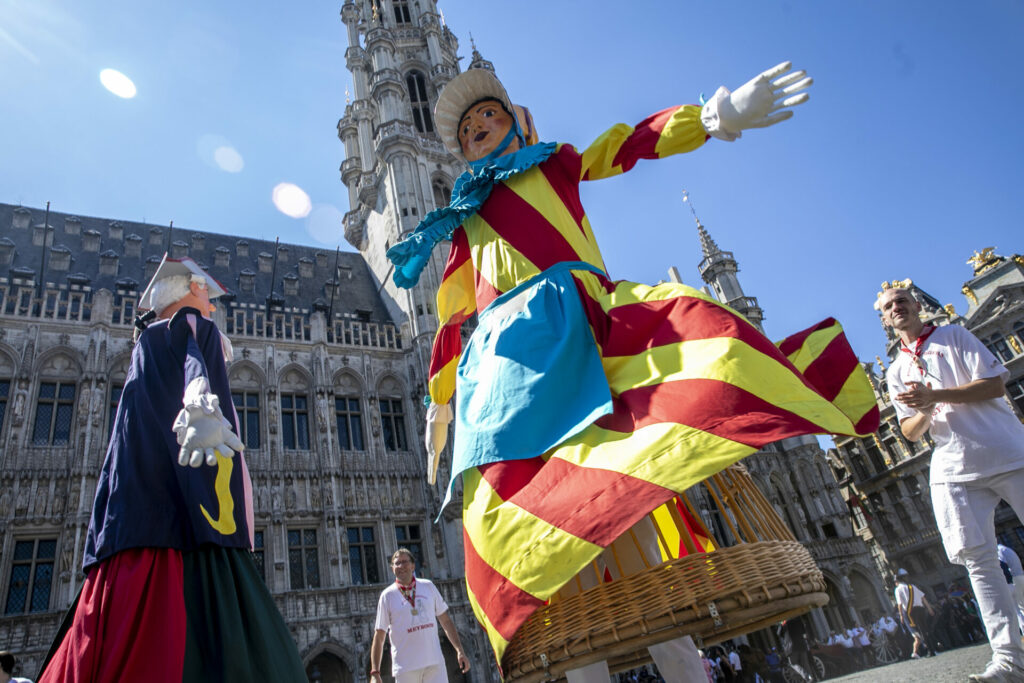Belgium's carnival season starts this weekend, with Binche Carnival the first in a succession of unusual festivals. For the uninitiated, the crazy costumes, parades and beer can be overwhelming and raise many questions about Belgian culture. Yet the carnivals offer a thrilling insight into Belgium's fascinating folklore.
Here are a few of the country's most entertaining carnivals in Belgium's three regions.
Brussels
Ommegang
Any Brusselaar will tell you that Ommegang is a carnival not to be missed. It dates back to 1338 when a poor woman named Béatrice Soetkins heard voices telling her that the Virgin Mary wanted to bless Brussels. The voice told Béatrice to go to Antwerp to steal the Our Lady of the Branch statue and bring it to Brussels. This was seen as "God's will" by the people of Brussels and the event is still celebrated to this day.
Ommegang is a three-day carnival in which participants dress as folklore characters and carry banners, with the statue as the centrepiece. One highlight is a medieval jousting competition and the event culminates in the Ommegang Parade. Other features are a medieval market and Ommegang Bar.
This year, Ommegang will be celebrated from 28 June to 1 July at the Grand Place.
Meyboom
Meyboom celebrations date back to 1213. Its origins are subject of varying legends, from a nobleman from Leuven who married a girl from Brussels to some form of beer tax. Whatever the dispute, a fight broke out between men from Brussels and Leuven which saw Brussels victorious. A tree – the Meyboom – was erected in celebration.
Today, the festival is held on 9 August and features a parade through the city. The Meyboom is carried by the Bûûmdroegers (tree-bearers). If the Meyboom is not put up by 17:00 in Brussels, the following year the Meyboom is put up in Leuven. But if the tree is successfully planted before the fated hour, celebrations in the city last until dawn the next day.
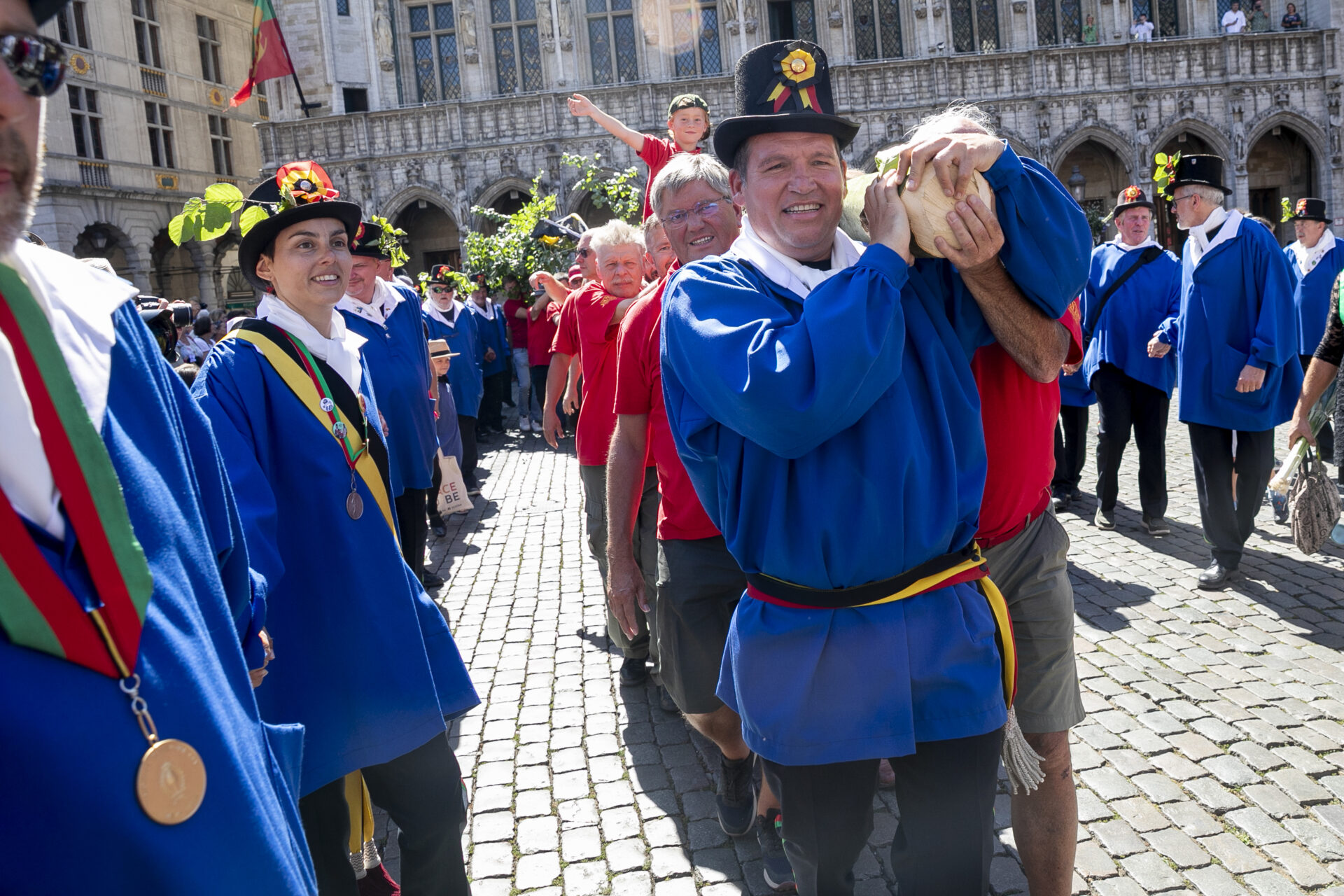
Brussel City Mayor Philippe Close during the 2022 edition of the Meyboom festivities in Brussels. The erection of the Meyboom is recognised as an expression of intangible heritage by Unesco. Credit: Belga / Hatim Kaghat.
Folklorissimo
This carnival takes place every third weekend of September. The folklore festival celebrates various Brussels traditions. A folklore village is set up on the Grand Place and comes alive with processions, games, tastings and other activities.
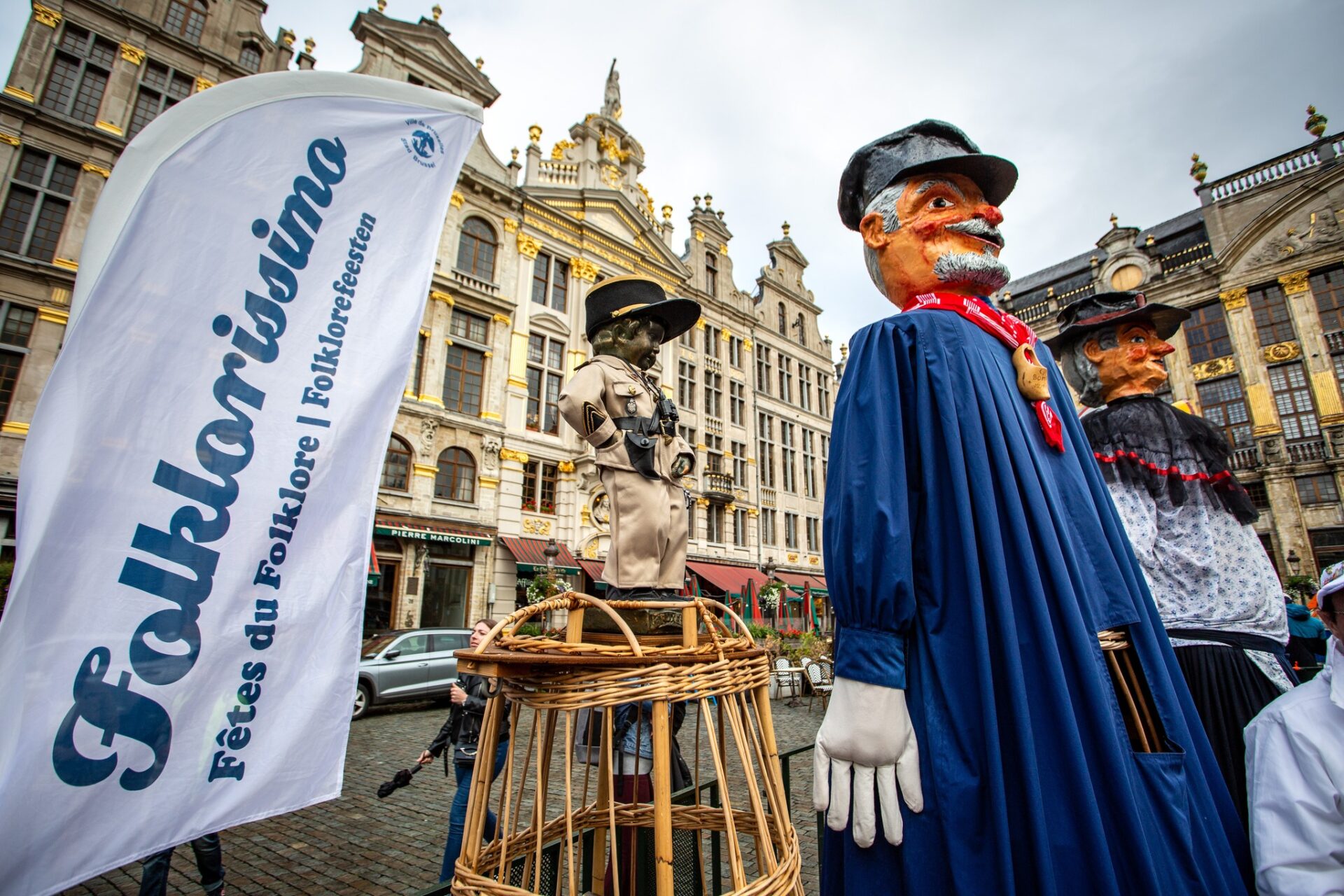
Credit: Pierre Will.
Wallonia
Carnival de Binche
This year, Carnival de Binche takes place 19 February – 21 February. Not only one of the most famous carnivals in Belgium, it is also one of the oldest carnivals in the world.
The exact origins are unknown but it is commonly believed that the festival is held to scare away the spirit of winter and welcome the spirit of spring in hopes of a good harvest. For this purpose, the famous Gilles wear wooden boots and are adorned with bells. On less-windy days, the Gilles wear impressive ostrich-feather hats.
The most important of the three days is Shrove Tuesday on which a lavish champagne and oyster breakfast is held at 07:00. This is followed by a parade during which the Gilles throw blood oranges into the crowd (it's "bad luck" to throw them back!). The carnival concludes with fireworks.
Doudou de Mons
Doudou de Mons is a festival that happens every year on the weekend of Trinity Sunday (57 days after Easter) and dates back to the 14th century. Legend has it that an evil dragon roamed the city wreaking havoc until the town was saved by Saint George.
Today the carnival is celebrated with four key events: the descent of the shrine, the procession, the final ascent of Car d’Or and finally the fight between St. George and the 10-metre dragon. The battle between them is a representation of the fight between good and evil. During the battle, the crowd attempts to grab the hair of the dragon's tail (made of horse hair). Those who succeed in pulling out threads will be graced with good luck.

The Doudou was recognized in 2005 by UNESCO as one of the masterpieces of the Oral and Intangible Heritage of Humanity. Credit: Belga / John Thys.
Bear Festival
Legend has it, the Carnival of the Bears began with a nine-year-old boy. His grandmother was terrified by a bear, which the young boy killed with his bare hands.
The parade started in 1954 with its mascot as a bear. A parade sees performers dress in bear costumes and carry around the ‘maidens cage’, in which young girls are held captive. At the end of the parade, the King and Queen of the carnival throw teddy bears into the crowd from the town hall. You can experience the carnival for yourself in the Walloon town of Andenne on 30 March.
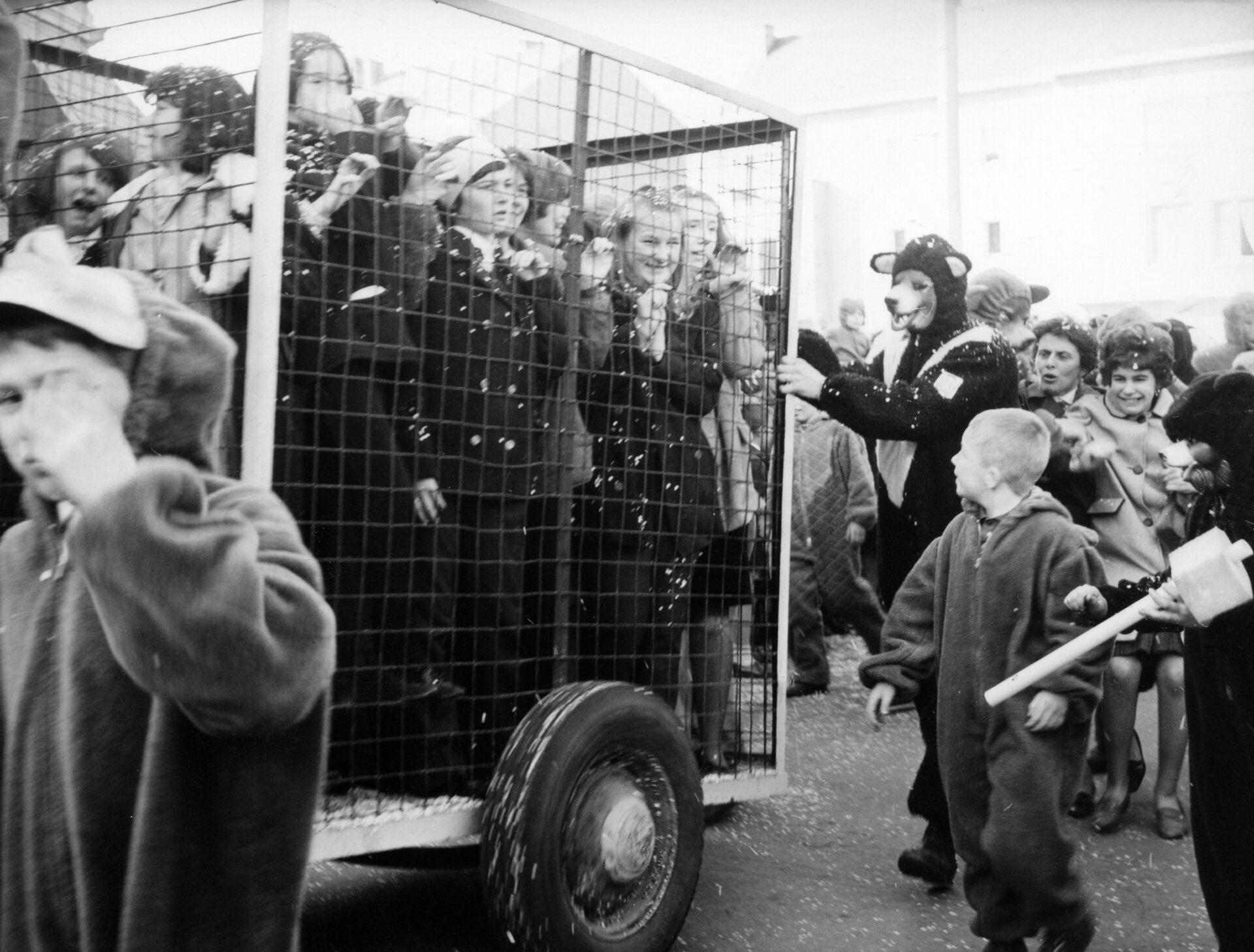
The Carnival of the Bears in 1966. Imprisoned young women and the bears which were "Kings of the day". Credit: Belga photo archives.
Laetare Stavelot
The distinctive feature of this festival is the Blanc Moussi, a brotherhood clad in white that tell the story of monks who in 1499 were forbidden by the prince-abbot Guillaume de Manderscheidt from participating in the carnival. The rebellious Stavelotains mocked the ban by participating in festivities dressed as white monks. Now, the festival is celebrated every year on the third Sunday before Easter in Stavelot.
The brotherhood of Blanc Mousis don't speak but growl as they make their way through the streets. Most carnival-goers dress in their finest folk costumes, matching the theme of the given year.
To add to the rebellious nature of the Blanc Moussis, they will stop at nothing to entertain and generate a reaction from their crowd – even to the point of throwing confetti and smacking those around them with dried pigs' bladders that look like balloons.
This year, the carnival will be from 18 March to 20 March.
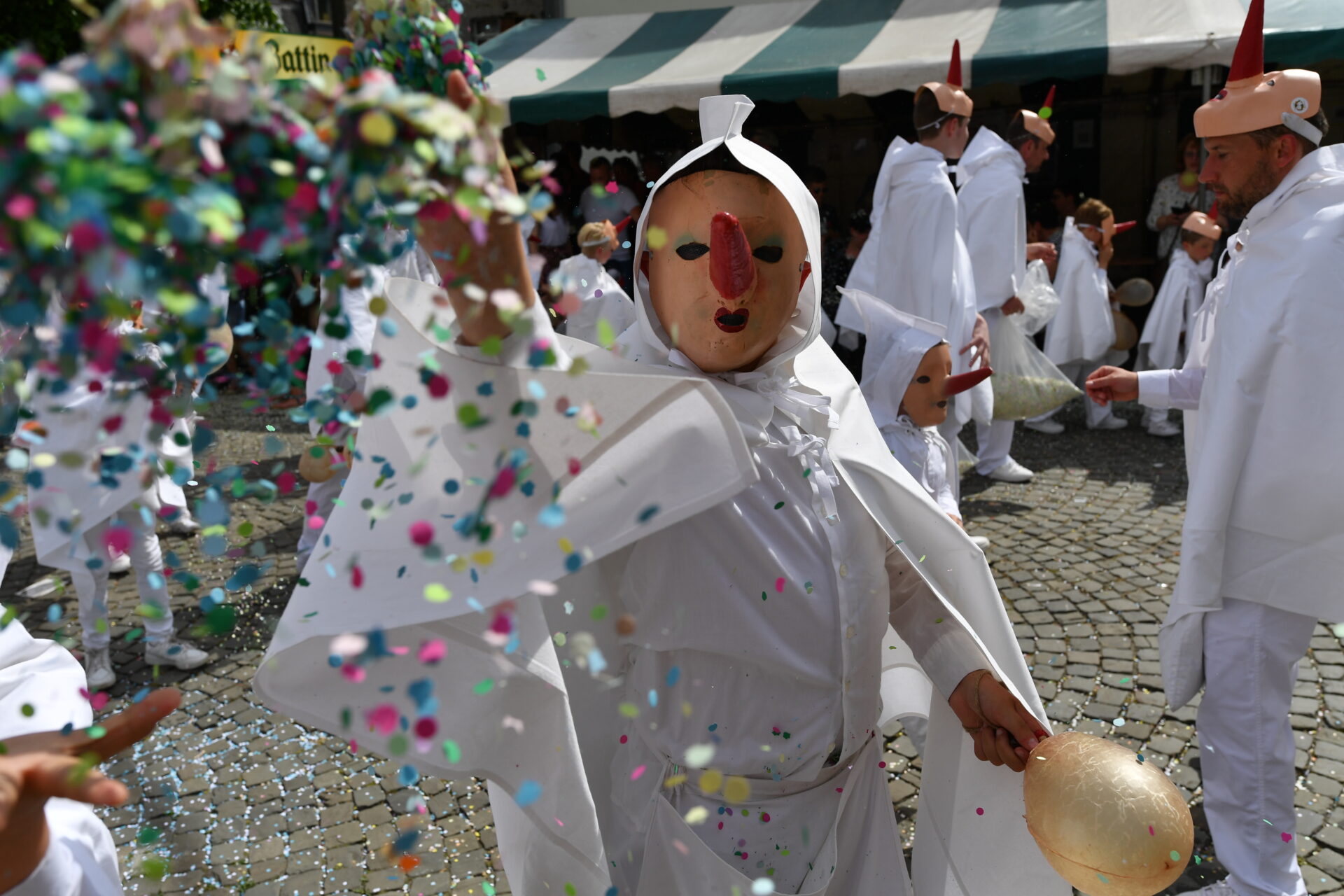
Blancs Moussis during a folkloric carnival parade in Stavelot. The parade replaces the Laetare of Stavelot which is traditionally held on Laetare Sunday and is well known for its 'Blancs Moussis', showering people with confetti. Credit: Belga / John Thys.
Flanders
Kattenstoet
In the 18th and 19th centuries, cats were associated with witchcraft and the first Cat Parade was held in 1938. As with many traditions, the story varies between generations. The most popular myth is that citizens used to torture and throw cats from the city towers in the middle ages.
The festival is now dedicated to felines, with floats made in their honour and people dressed as cats. Other features include the Ypres Giants and other medieval characters.
The Cat Parade is celebrated in Ypres on the second Sunday of May every three years. The next will take place in 2024, when the festival will be held on 11 and 12 May. During the festival, the "city fool" throws toy cats from the bell tower; puppet witch burning also takes place.

The Cat Parade. Credit: Belga / Kurt Desplenter.
Ganzenrijden
Another unique event takes place in the Antwerp Polder (Zandvliet, Berendrecht, Lillo, Hoevenen, Stabroek and Ekeren) on the Sunday after mid-lent. Riding on farmers' horses, participants young and old try to grab the head of a goose which is hung in a net. The lucky winner is crowned king for the following year.
The kings of the previous three or four years then compete to be crowned "Emperor of the Parade". This year, Ganzenrijden (Goose riding) will be held on 26 March.

Credit: Instagram / kksalkmaar.
Beselare Witch Parade
The popular fear of witches in the Middle Ages is well known. This common dread is the root of the Witch Parade in Besalare – a town famous for stories of witchcraft in the 17th century and that became known as the "folklore parish".
The Beselare Witch Parade sees participants dress as witches and make their way through the city. It is a bi-annual festival that occurs on the last Sunday of July. This year you can be sure to find the parade in Beselare on 30 July.

